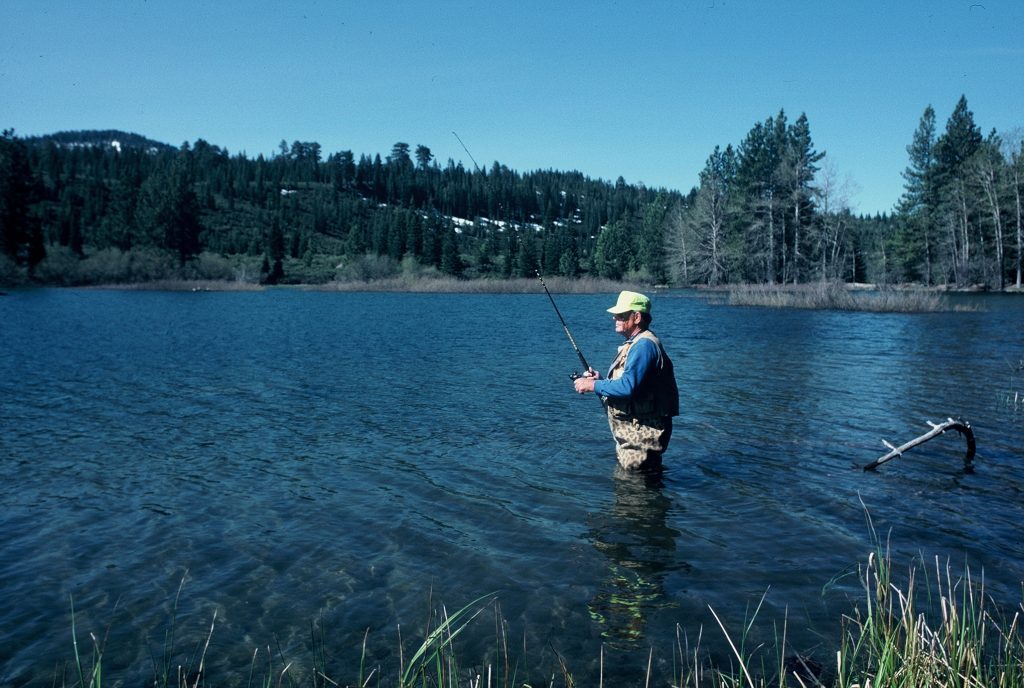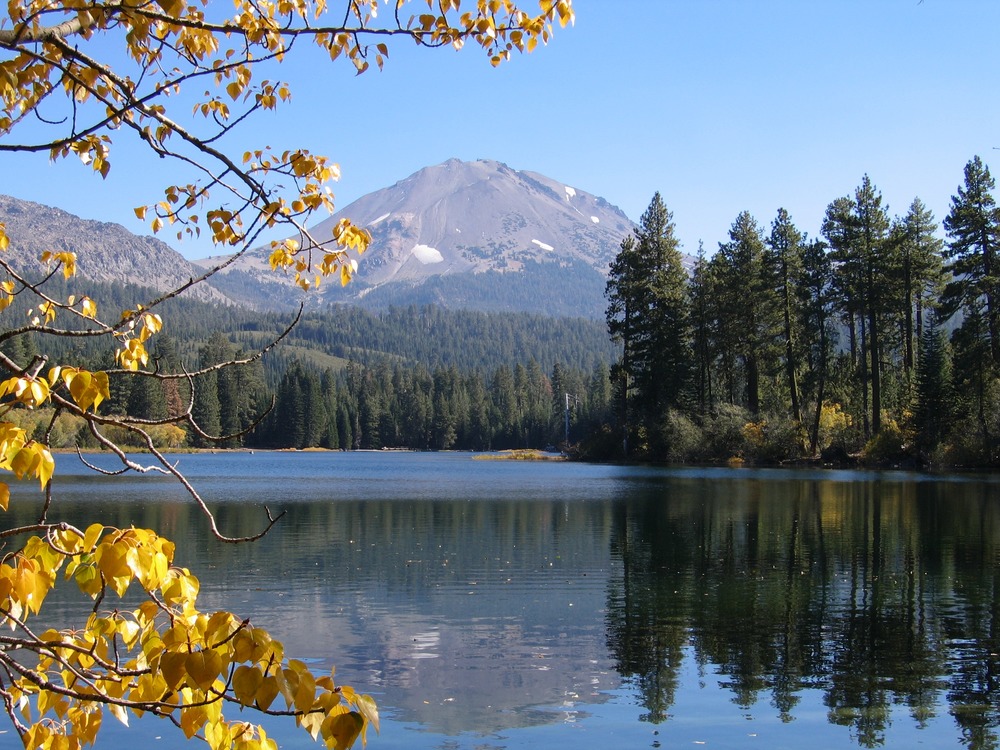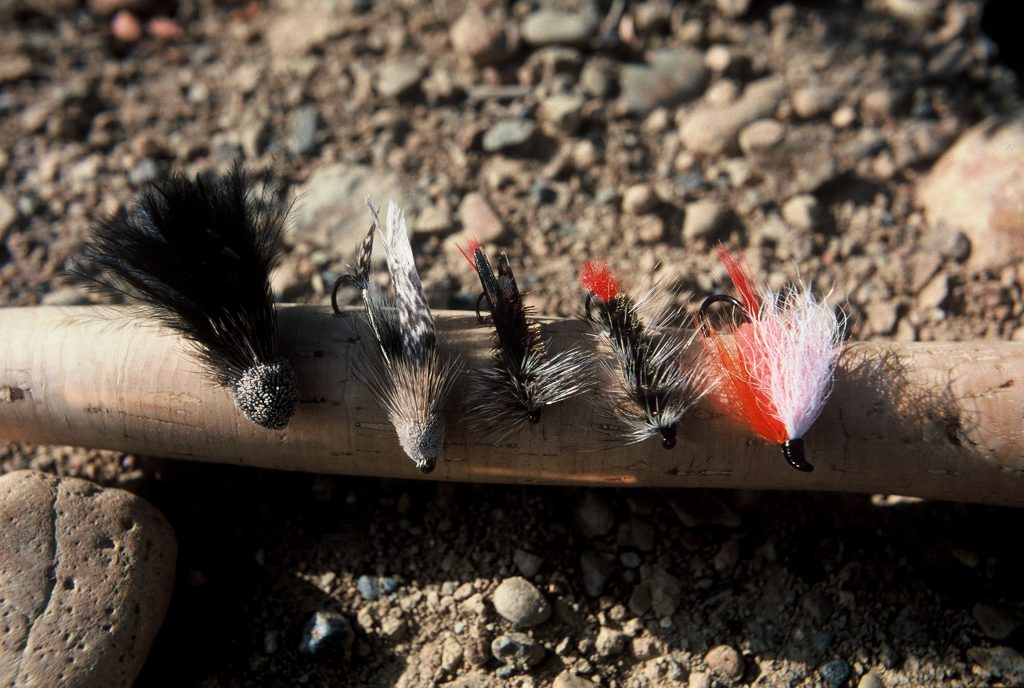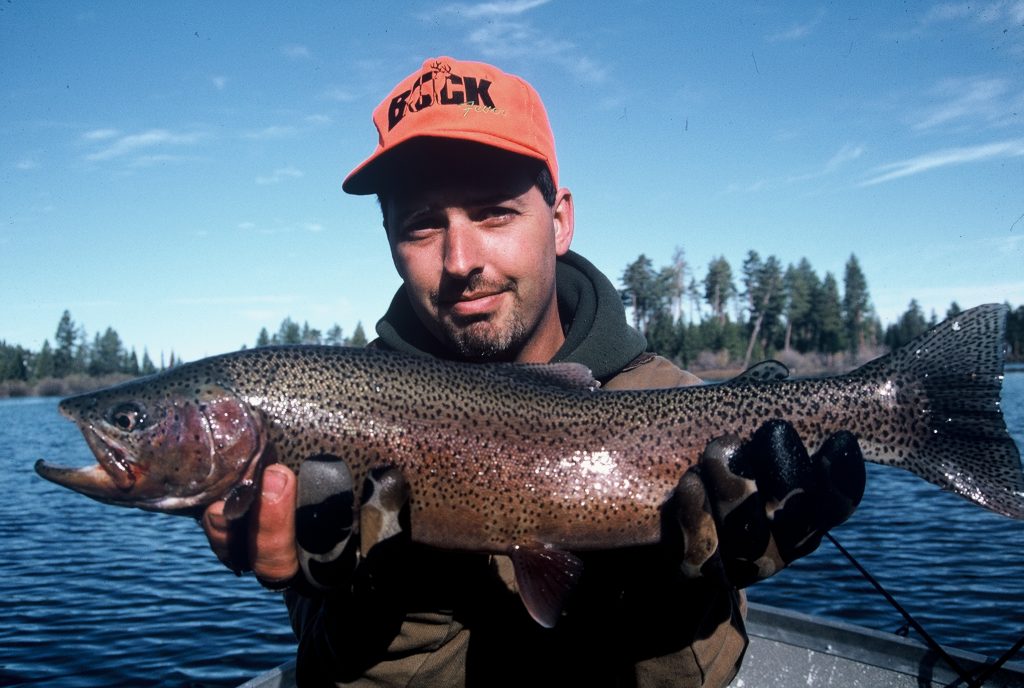Trout Opener Countdown: Fishing In The Land Of “Fire And Ice” Trout
We’re counting down the days this week to Saturday’s statewide trout opener with a different story that’s running in our April issue. Today: Lassen Volcanic National Park’s hot fishing options

By Art Isberg
Dawn was just a grey halo behind tall pines when my adult son Craig and I pushed our small skiff into the icy waters of Manzanita Lake.
This modest-sized body of water has graced picture postcards and wall calendars too numerous to count. The lake sits at 5,000 feet and just a stone’s throw from the entrance station to Lassen Volcanic National Park in Northeastern California. It’s located off Highway 44 and a 57-mile drive east from Redding. Behind and above the lake looms snow-capped Lassen Peak (10,457 feet), a stunning backdrop still considered an active volcano and which last erupted from 1914 to ’17.
The national park has many waters that offer productive fishing for both rainbow trout and brown trout. For this piece I’m concentrating on three lakes. Knowing when, where and with what to tempt fish into rod-bending battles is the key to great fishing.

MANZANITA LAKE
Manzanita is classified by the California Department of Fish and Wildlife as “blue-ribbon” trout water – catch and release only – and for good reason. Both Craig and I have taken rainbows and browns up to 41?2 pounds from its crystal-clear waters. A large campground for both tent campers and recreational vehicles sits just back of the lake. A small general grocery store with basic necessities fronts the campgrounds.
When we fished there, trout were just beginning to dimple the lake surface as we pushed off. I got on the oars and quietly rowed out within casting distance of risers. This kind of timing is one of the first important keys to success – not only on Manzanita but other trout lakes in the park.
Feeding fish are most active from first good light until an hour after sun is on the water, and again from late afternoon until sundown. These two times are when you will experience most hookups. During midday, trout tend to move off shallows that rim the lake and work into deeper water. Now, you’ll want to sink your offering to reach them and work it at a slower retrieve to spark thumping strikes.
Another important time to fish the lake is in early spring when ice-out first takes place. We often wade lake shallows or use the skiff to reach ice shelves where fish hold up. After living under the ice all winter long on reduced rations, trout are now aggressive and will offer savage strikes when the right kind of offerings are presented.
A note about the use of our small skiff: Regulations for lake fishing inside park boundaries state that only nonmotorized watercraft such as small boats, inflatable rafts, float tubes or pontoon boats can be used. Not even electric motors are allowed, so prepare to do a little rowing.
Manzanita and other lakes inside park boundaries see a lot of visiting fly rod aficionados casting thistledown of many varieties as they tempt trout to strike. Because no live or even dead fish baits are allowed, you must choose either fly fishing or lure fishing. On Manzanita, note that you can only use a single barbless hook with either method so that fish can be returned to the water unharmed. The catch-and-release regs make it a great piece of water for truly big trout battles.
Here is a modest list of the more popular flies that will take fish on Manzanita (and other local lakes): a Bouface Brown tied on a number 10 hook; Carpenter Ant on a number 14 or 16 hook; Damsel Nymph on a number 14 hook. Monroe Leech on a number 10 hook; and Parachute Adams on a number 14 or 16 hook.
The Fly Shop in Redding can outfit and offer fly selections for any time of the year (800-669-3474; theflyshop .com; email: info@theflyshop.com). They’re well worth contacting.
For the angler not into long rod fishing, a solid variety of lures and spinners will also take big Manzanita fish. Remember to replace the trebles that come with lures with a single barbless hook of large size. I like number 6 hooks and fishing with green-tinted 6-pound-test monofilament leader that disappears once wet. We have taken trout using 2-inch Needlefish in rainbow trout body finish; 1?2-ounce Krocodiles in silver or gold, and with a number 6 hook; 1?4-ounce Z-rays in frog body finish; 1?4-ounce Kastmasters in trout body finish; and 1?2-ounce Wonder lures in gold and red stripe finish. Small Colorado spinners in tandem or singles of both chrome or gold finish with a number 6 hook are a perfect fit too.

BUTTE LAKE
Butte Lake, at 6,100 feet, and its adjoining campground are located 6 miles off Highway 44, on the road leading to Susanville. It sits in the northwest corner of the park and its beautiful waters are rimmed in black- rocked volcanic moraines that run down the lake’s edge.
Butte also has an intriguing history. Starting in the 1980s, trout stocking in all park waters was ended. I fished Butte many times before this prohibition and took large trout that, head to tail, would not fit inside a regular ice chest.
Some of these fish that went to 4 pounds were tricked by trolling big flashers like Ford Fenders down deep and trailing 3 feet of 8-pound monofilament leader. The rig was topped off with a small flashing lure trailer or a large fly pattern like a black Woolly Worm. Those stocked rainbows had grown large and powerful over time in Butte’s waters. The fishing was fantastic.
Because stocking ended in Butte, supposedly trout fishing is not viable today in the lake. But we beg to differ. Craig, fishing Butte several years ago with light line, hooked and battled a huge trout he estimated to be at least 24 to 28 inches long when he worked it close inshore.
That rainbow took one look at his adversary and peeled off line on a sizzling run heading back out into the lake until it broke off. No trout in Butte Lake? I don’t think so.
Obviously, some big fish still swim down deep in Butte’s waters and some have managed to spawn in a small creek at one end of the lake. Unlike Manzanita, you can keep fish on Butte following state regulations.
The lake also gives anglers a much larger selection of offerings to work with. Both artificial baits like flies and lures are common, but also worms, salmon eggs and PowerBait (no dead or live baits are legal here).
Here’s a trick to fishing the three baits just mentioned, either from shore or a floating device: You want to get the bait down deep near bottom where fish are. Use a small teardrop sinker attached to 8-pound clear monofilament line, and then place the hook 3 feet above the sinker. The reason? Lake bottoms in many places have tall weeds and grass growth down deep. This means you want your bait up where cruising fish can see and take it – not lost in vegetation.
Flashing lures and spinners, plus the aforementioned fly patterns – all can be used on Butte Lake. For shore-bound anglers, a good walking trail rims the lake on its southern and eastern edges.

HORSESHOE LAKE
Horseshoe Lake sits at an elevation of 6,600 feet in the eastern part of the park and drains into Snag Lake via Grassy Creek. On a map, look northwest of Juniper Lake. Fishermen looking for a true wilderness experience should consider this lovely piece of backcountry water.
There are no roads or campgrounds here; you must hike in. The trailhead begins at Juniper Lake’s picnic area. You can also camp at Juniper to hike in each day to fish Horseshoe. The climb is modest and the 2.8-mile walk is estimated at two hours one way. You will also leave the usual vacation crowds far behind.
Concentrate on aquatic vegetation growing just offshore, where trout hold up in cover and then dart out to strike. Fly fishers should consider selecting Woolly Worms in black, olive or brown and on long-shanked number 3 hooks. The Woolly Bugger in black, red or purple is another good choice for summer fishing. At Horseshoe you can keep your catch under statewide regulations for trout.
If you want to reach midlake water, you must pack in a float tube or a small inflatable rubber raft. Having that option can be well worth it when fish are feeding.
For lure anglers, the 1?4-ounce Dardevle in silver or rainbow trout finish is worth having in your vest. Iconic Kastmasters in 1?2-ounce chrome models with a bucktail trailer would be a second good selection. Heavier lures from half an ounce and up give you the ability to make longer casts with spinning gear from shore to reach feeders. Twin-bladed Super Dupers in either a frog or nickel/ redhead and fire/silver finish in 1?4-ounce models and worked on slow retrieves are the right remedy for rainbows here.

BEAUTIFUL SETTING
Lassen Volcanic National Park is one of the most unique and visually beautiful parks in the entire nation. From bubbling mud pots and hissing sulfur vents to snow-capped volcanic peaks, it’s a thrill to spend time trout fishing in this wild, unspoiled high country. It truly is a land of fire and ice rainbows. CS



